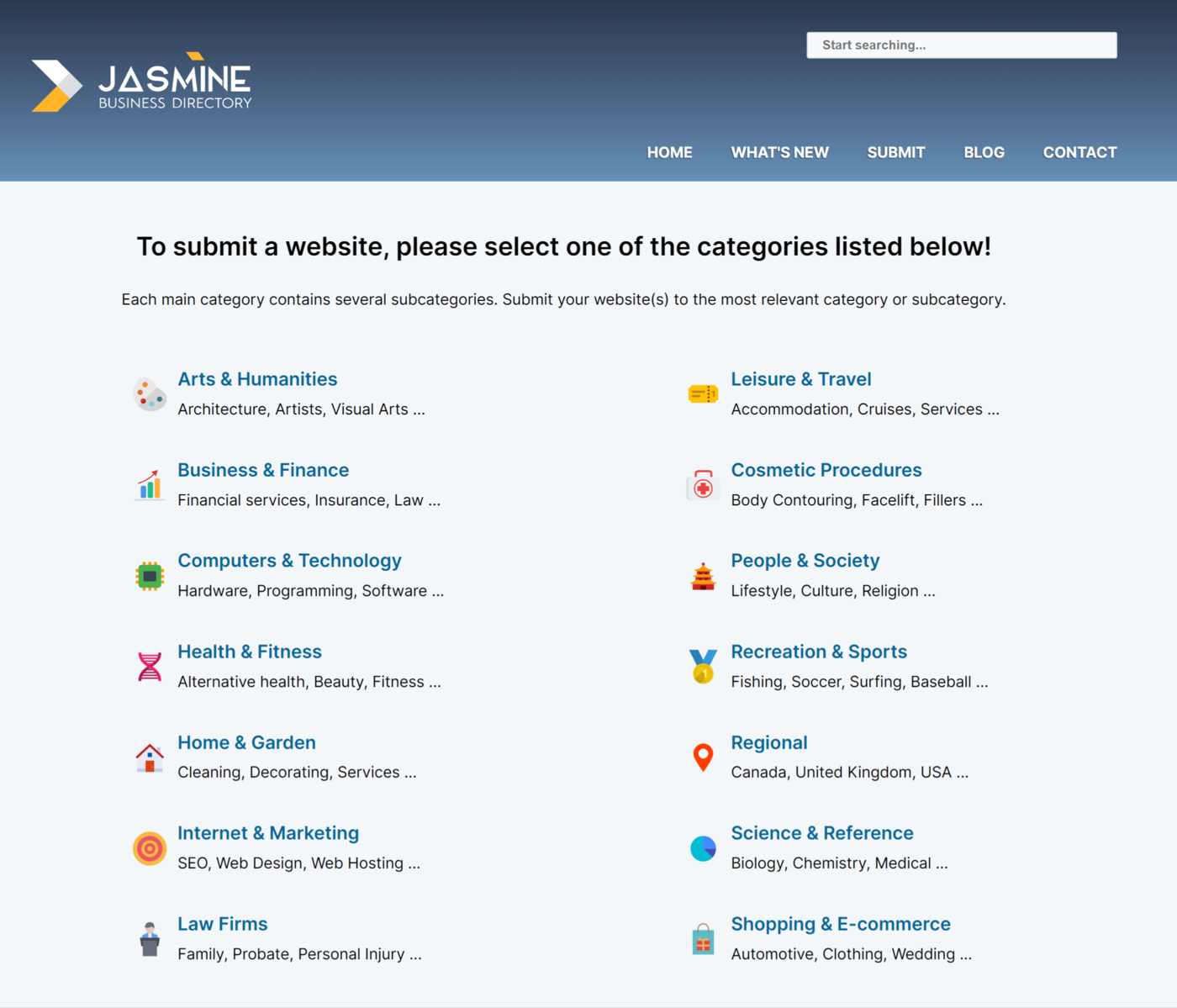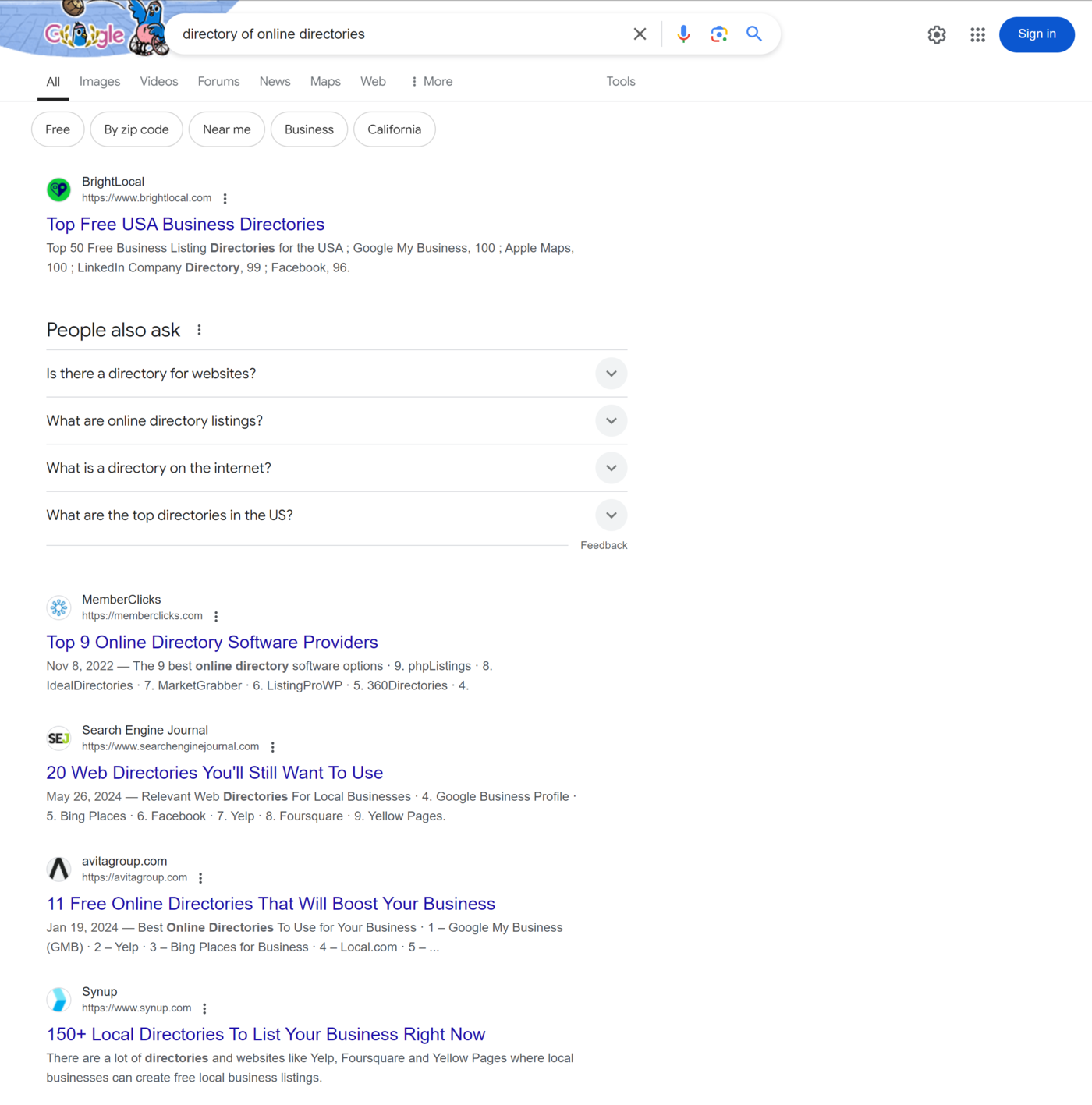What is Directory Submission?
Directory submission is the practice of submitting your website details to a web directory. A web directory is an online database containing a list of websites. These directories typically contain websites or businesses within a specific niche, industry, or location.

Directory submission is a link-building technique. Bloggers typically engage in it to get more inbound links to point to their site. The directory itself could be free, paid, or reciprocal.
- A free directory will link to your site for free
- A paid directory will link to your site in exchange for payment
- A reciprocal directory will link to your site in exchange for a link from your site
Directory submissions are generally considered a white hat SEO technique. However, they can become a black hat SEO technique when done inappropriately. This is particularly true when you get involved with a low-quality directory or engage in spammy or aggressive reciprocal linking with one.
How to Perform Directory Submission for SEO
Directory submission is typically straightforward, as many online directories are ready to include your site in their database. Here are some tips on finding and including your site in those directories.
1 Identify High-Quality Directories
The first step is to find reputable directories relevant to your site. All directories have different criteria for including sites in their database. For example, most directories only accept businesses or blogs within a specific niche, category, region, or industry.
Some directories even contain lists of other directories. A search for a keyword like “list of web directories,” “directory of directories,” and “directory of online directories” will bring up these directories.

These directories are a good start. Review them and add your site to the ones relevant to you. However, you should ensure to avoid low-quality or spammy directories.
It would also help if you focus on free or paid directories. Some directories even offer both options, so you can review them to see which option benefits you. Reciprocal directories, on the other hand, are sometimes questionable and may be a form of grey hat SEO, so it is best to avoid them altogether.
2 Sign Up to the Directory
The next step is to submit your details to the directory. Most directories require you to sign up for an account and enter your blog details. The process is usually straightforward, so you should follow their procedures and enter your business details.
However, it is crucial to fill in your details exactly as they appear on your site. Your name, website URL, and contact details should be exactly the same as they appear on your site.
Your description should be brief and correctly explain the type of content you publish. It should also contain relevant keywords and must be listed in the appropriate category and subcategories. Once done, you should double-check for accuracy and completeness.
You should ensure that your submission conforms to the directory’s submission guidelines. Many directories have rules about descriptions, keywords, and link placement, and it is advisable to follow them to avoid rejection.
3 Monitor Your Submissions
After submitting your details, you should wait for the directory to approve your listing. Once done, you should monitor and maintain your submissions, as directory requirements and rules may change over time.
Some directories may also change the details of your submission, specifically the description. You should monitor it to ensure it conforms with your business. You should also update the directory whenever your business details change, for example, if you move addresses or change numbers.